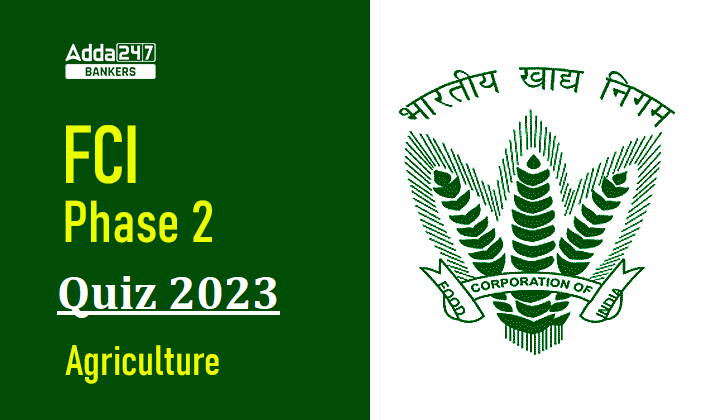Q1. The chief excretory organ in insects is _________?
(a) Intestine
(b) Malpighian tubules
(c) Crop
(d) Gizzard
Q2. Diamond back moth (DBM) is a pest of ____________?
(a) Mango
(b) Crucifers
(c) Banana
(d) Coconut
Q3. The major excretory product of terrestrial insect is _________?
(a) Uric acid
(b) Urea
(c) Ammonia
(d) None of these
Q4. Which protein is responsible for the flexibility of wings sclerite?
(a) Chitin
(b) Arthropodin
(c) Sclerotin
(d) Resilin
Q5. Setaceous antennae are observed in ____________.
(a) Cockroach
(b) Grasshopper
(c) Termites
(d) Saw fly
Q6. Shedding of citrus fruits with feeding punctures is a damage symptom of __________?
(a) Fruit fly
(b) Butterfly
(c) Fruit sucking moth
(d) Leaf miner
Q7. ________ is an introduced pest of coffee.
(a) Green bug
(b) Berry borer
(c) Stem borer
(d) Mealy bug
Q8. _________ is a monophagous pest of mango.
(a) Leaf webber
(b) Hopper
(c) Nut weevil
(d) Stem borer
Q9. Ashy coat on apple stem with galled root is due to ___________.
(a) San jose scale
(b) Fruit borer
(c) Wooly aphid
(d) Stem borer
Q10. Which of the following is a serious pest of onion and garlic?
(a) Mealy bug
(b) Leaf hopper
(c) Thrips
(d) Bulb borer
Solutions
S1. Ans (b)
Sol. The Malpighian tubules are tubular structures that are free floating in the hemolymph and function as excretory and osmoregulatory organs of insects. These tubules function in the same way as human kidney and share common principles during development. The Malpighian tubules (MTs) are connected with their proximal ends attached to the alimentary canal at the junction between midgut and hindgut. The Malpighian tubules are named after the Italian scientist Marcello Malpighi who is considered to be the ‘Father’ of both Histology and Comparative Physiology.
S2. Ans (b)
Sol. The diamondback moth, Plutella xylostella (Lepidoptera: Plutellidae), is a major pest of crucifers (Brassicaceae) in many parts of the world. Damage is caused by larval feeding on the leaves and around buds.
S3. Ans (a)
Sol. Ammonia is the excretory product of aquatic animals and requires a large amount of water for excretion. While terrestrial animals like birds, reptiles and insects excrete uric acid to conserve water, so they are uricotelic.
S4. Ans (d)
Sol. Resilin is an elastic cuticular protein responsible for the flexibility of sclerites, e.g., wing articulatory sclerites.
S5. Ans (a)
Sol. In case of setaceous antennae, each segment from base to apex becomes smaller and tapering in to a point. It is mainly observed in cockroach and leaf hoppers.
S6. Ans (c)
Sol. Fruit sucking moth (Otheris materna, O. ancilla, O. fullonica) adult pierce the fruit, sucks the juice causing rottening and dropping of the fruits. Dilute suspension of fermented molasses and malathion 0.05% (50 EC at 1ml/lit) is a poison bait for control of fruit sucking moth.
S7. Ans (c)
Sol. The coffee stem borer, Xylotrechus quadripes, is a serious pest of arabica coffee causing a yield loss up to 40 per cent in all coffee growing areas of India. It is a blackish brown colored beetle measuring about 2 cm in size with three pairs of white stripes running obliquely across the wings
S8. Ans (c)
Sol. S. mangiferae (Mango nut weevil) is a monophagous pest on mangoes. It is one of the most important mango pests and widespread in most mango-growing countries. Adults usually emerge after fruits fall and enter a diapause until the following fruiting season. The greatest damage caused by this pest is to interfere with fruit export because of quarantine restrictions. The damaged fruits have obvious hard, amber-coloured, protective resin marks over eggs on the fruit skin, often resulting in fruits being downgraded. For late-maturing cultivars, emerging adults can cause post-harvest damage to the fruit flesh. S. mangiferae infestation can increase fruit drop during early fruit development, and reduce the germination capacity of seeds.
S9. Ans (c)
Sol. Symptoms caused by Apple wooly aphid (Eriosoma lanigerum)
• Nymphs and adults suck the juice from bark of the trunk or fruits
• Weakening and death of the smaller plants
• Infested twigs shrivel and die
• Galls on the roots
• White, ash-colored woolly patches on the trunk.
Management:
Use resistant root stocks M 778, M 779, MM 14, MM 110, MM 112
Spray dimethoate 30 EC 0.06% or methyl demeton 25 EC 0.025%
Release the parasitoid: Aphelinus mali
Predators: Chilomenus bijugus and Coccinella septumpunctata
S10. Ans (c)
Sol. High numbers of thrips can reduce both yield and storage quality of onions. Onion thrips also can be an occasional problem on garlic but are generally not as serious a pest as they are on onion. Thrips are most damaging when they feed during the early bulbing stage of onion development.



 GA Capsule for SBI Clerk Mains 2025, Dow...
GA Capsule for SBI Clerk Mains 2025, Dow...
 The Hindu Review October 2022: Download ...
The Hindu Review October 2022: Download ...
 Bank Exams 2025, Check Full List of Upco...
Bank Exams 2025, Check Full List of Upco...


